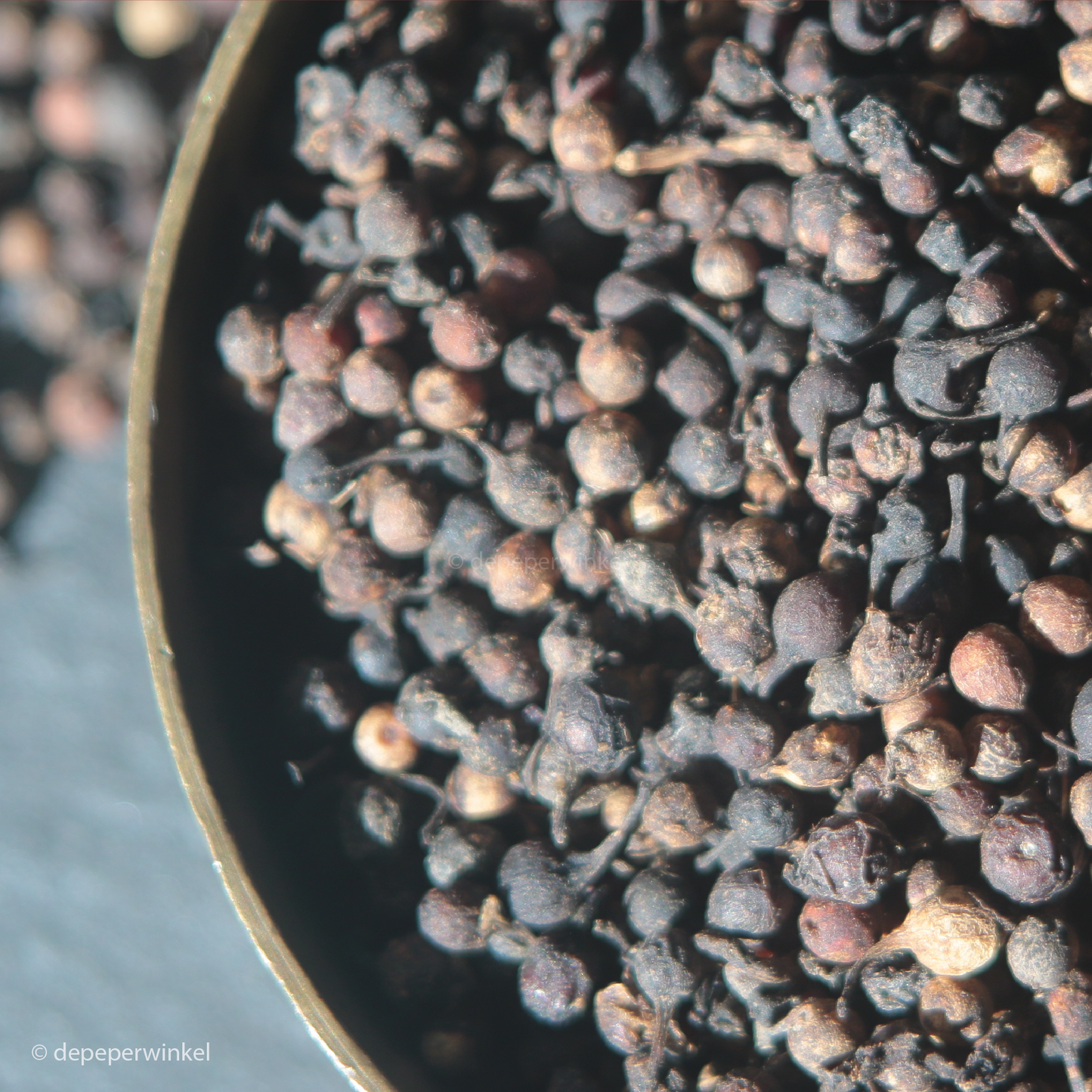depeperwinkel
Ashanti <tc>pepper</tc> (tail <tc>pepper</tc>)
Ashanti <tc>pepper</tc> (tail <tc>pepper</tc>)
In stock
Unable to load availability for pickup
The Ashanti
Stock item: currently unavailable, availability unknown
The Portuguese brought the cubeb
For a long time, both spices dominated European cuisine, but both were displaced by
The Ashanti
Taste and smell
The aroma is pleasant, and the taste is less bitter than that of Javanese cubeb. It's an important
Usage
Ashanti
Compared to the Indonesian cubeb, this African cubeb is more powerful in taste, but milder in spiciness.
Like black
Recipes):

Features:
- 100%
pepper berries from the Piper guineense - origin: Likouala, Congo (Rep)
Assortment
- available in glass, stand-up pouch and test tube (10 ml)
- larger quantities on request
Gift wrapping
- The jar is available in a tasteful gift packaging, consisting of a cube box filled with black tissue paper.
- For an overview of our gift packaging, please refer to the section gift wrapping
General advice
- grind your ashanti
pepper shortly before use
- add the ground
pepper to your preparation at the very last moment
Save:
- store your ashanti
pepper in a closed container - preferably store in a dark, dry and cool place
- best before - - -
- This expiration date is an indication
Batch number
The batch number helps us track which batch an item originates from. It's listed on the packing slip and invoice.
Share











